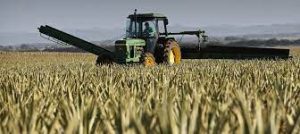
Agricultural Overview of Capricorn District Municipality (CDM)
Agriculture contributes approximately 2.8% to the total economy of the Capricorn District Municipality, generating an estimated R690 million annually.
Key Agricultural Products
Potatoes are by far the most important and widely produced crop in the district, with a production value of R200 million as of 2000. Other major agricultural products include:
-
Tomatoes – R98 million
-
Eggs – R88 million
-
Broilers and beef – R61 million each
-
Pork and citrus – R37 million each
In Polokwane, farmers produce 60,000 tons of onions annually, contributing approximately R50 million to the local economy. However, a significant concern is the heavy reliance on imported agricultural inputs, which account for 65% of the total production value (Steyn: Agricultural Cluster Study).
Citrus Production
CDM is home to one of South Africa’s largest citrus estates—Zebediela Citrus Estate—covering 13,785 hectares in Lepelle-Nkumpi Municipality. The estate produces citrus primarily for export, with the remainder supplied to domestic markets.
Livestock Farming
Livestock farming is a vibrant sector in the district. As of 2001, the district’s livestock population included:
-
Goats – 240,000 (44%)
-
Cattle – 200,000 (38%)
-
Pigs – 55,000 (10%)
-
Sheep – 50,000 (9%)
Between 1995 and 2001, the proportion of cattle increased, while that of goats slightly declined. Livestock farming is predominantly communal (75%), with commercial operations accounting for the remaining 25%.
Agricultural Development Initiatives
The Limpopo Department of Agriculture is a key partner in driving agricultural development in the district. Over 100 agricultural development projects are currently being supported, focusing on:
-
Poultry farming
-
Vegetable production
-
Lucerne cultivation
-
Livestock and dairy farming
-
Agro-processing initiatives
The district has allocated funding for several strategic agricultural projects, including:
-
Chicken abattoir and broiler processing – R1 million
-
Fishing farm – R1.3 million
-
Secondary vegetable cooperatives – R80 million
-
Paprika beneficiation – R3.2 million
-
Hydroponic farming systems – R177 million
Strengths and Weaknesses in Agricultural Development
(As identified in the 2007 Summit)
Note: The strengths and weaknesses section appears to be incomplete. Please provide the bullet points or details you’d like included.
|
|
|
|
|
|
 CDM Municipality
CDM Municipality

